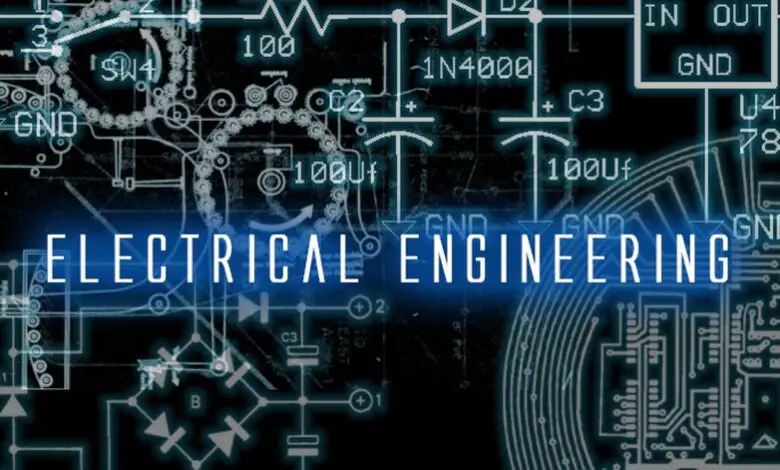
Electrical engineering is the branch of engineering that deals with the practical applications of electricity in all of its forms, including those found in the field of electronics. However, depending on who you ask, the definition of electrical engineering may differ.
With the commercialization of the electric telegraph and power supply in the late nineteenth century, the field first became an identifiable occupation. The field now includes a variety of subdisciplines, such as power, control systems, electronics, signal processing, and telecommunications.
Today’s technological advances are so rapid that what was once thought to be years away has become a reality, giving electrical engineering a fascinating history.
History of Electrical Engineering

As explained on backofficepro, to understand the history of electrical design and layout, we must first understand the history of electricity. Electricity has been a scientific curiosity since at least the seventeenth century, but it wasn’t until the nineteenth century that research into the subject became more intense.
Furthermore, while the study of electricity was originally considered a branch of physics, it eventually branched out into its own discipline, electrical engineering.
Electrical engineering became a profession in the late nineteenth century, thanks to the tools of modern research techniques that were developed at the time.
Following that, practitioners established a global electric telegraph network, and the first electrical engineering institutions in the UK and US were established to support the new discipline.
Some of the most notable electrical engineers during that time include Thomas Edison, Alexander Graham Bell, Edwin Howard Armstrong, Nikola Tesla, and Charles Proteus Steinmetz.
During the twentieth century, there was a growing interest in the development of domestic applications for electricity, as well as tremendous advances in the field of electronics, particularly in radar during WWII.
Later, as consumer devices began to be developed in the postwar years, the field expanded to include modern TV, audio systems, Hi-Fi, and, more recently, computers and microprocessors.
Wi-Fi, lasers, microwave ovens, and smart home products are examples of major advances in electrical engineering. Since Faraday’s time, electrical engineering has come a long way.
Today Electrical engineering is a constantly evolving field that continues to produce incredibly innovative products with engineering work involving the use of computers, and computer-aided design programs are commonly used when designing electrical systems.
Some of the most popular branches or subdisciplines of Electrical Engineering are; Power engineering, Control engineering, Electronic engineering, Microelectronics, Signal Processing, Telecommunication, and Instrumentation engineering.
Applications of Electrical Engineering

Every new technological breakthrough advances the field of engineering, and new technologies in electrical engineering are especially exciting. In this section, we will discuss some of the most recent new electrical engineering applications.
Robotic Surgery

Robotics is a field that combines electrical engineering, mechanical engineering, and computer science. The invention of robotic surgery is one of the most recent applications of electrical engineering.
During a robotic-assisted procedure, your surgeon manipulates the instruments using master controls, and the instruments translate your surgeon’s movements into precise movements inside your body.
It enables doctors to perform a wide range of complex procedures with greater precision, flexibility, and control than traditional techniques allow.
Understanding the programming, control system, and power electronics of the robot is aided by electrical engineering. Electrical engineering is concerned with the robot’s power generation, transmission motor, and control system.
Electric Vehicles

Electric vehicles have been steadily gaining popularity, and they are almost certainly the vehicles of the future due to their energy efficiency and lower carbon emissions.
Electric vehicles operate by plugging into a charging station and drawing power from the grid. The electricity is stored in rechargeable batteries, which power an electric motor, which turns the wheels.
Electrical Engineers can improve the current vehicle design by making improvements to the motor, braking system, electronic gadgets, Batteries, and electric lighting of Electric Vehicles.
Wireless Charging

Wireless charging is currently used in personal devices such as laptops, smartphones, and earbuds, and it is expected to become standard in electric vehicles in the future.
A wireless charger is made up of coiled wires wrapped around a bar magnet, also known as an inductor. When an electric current flows through the wires, an electromagnetic field is formed around the magnet, which aids in charge transfer.
Today, electrical engineers have gone so far as to create a new wireless charging technology that supports multiple wireless standards. Regardless of the device’s wireless standard, the device can charge multiple devices at the same time.
Wearable devices

Wearable devices are electronic technologies or devices that are integrated into items that can be worn comfortably on the body. These wearable devices are used to collect data in real-time.
Currently, the market for these products is rapidly expanding, particularly among devices aimed at the general consumer. This is due to the rapid advancements in electronic and computing technology over the last decade.
Additionally, the hands-free nature of wearable computing devices makes them extremely useful for businesses. It makes a workplace more efficient and safe as it is easier to track the emergency and rescue teams.
Final words
Electrical engineers are in higher demand than ever in an increasingly technological world. Electrical engineers work in almost every industry and play an important role in the development of most products and systems that affect our lives.
Furthermore, as they solve problems or develop new products or processes, they will most likely be working collaboratively with other engineers.
Learning about people who have made significant contributions to electrical engineering as well as those who currently work in the field is one of the best ways to get a sense of what it might be like to work in the field.
So, if you are an aspiring electrical engineer looking to enter this field, make sure that you consider the various options and find your path as an electrical engineer that you find the most interesting and satisfying.

